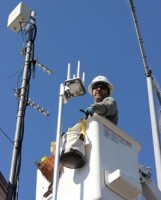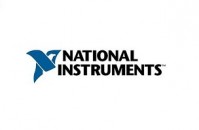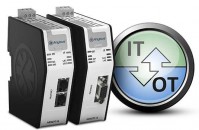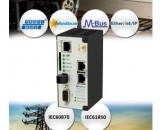 ABB has been selected to provide wireless network products and services to support the deployment of smart meters across the City of Memphis, Tennessee, in the US. The introduction of smart meters is expected to improve efficiency of electricity, water and gas supplies and mitigate loss and theft. The wireless network will support advanced metering infrastructure (AMI) communications, covering an area of around 2030 square kilometers (sq km) and will collect data from nearly 1 million smart meters.
ABB has been selected to provide wireless network products and services to support the deployment of smart meters across the City of Memphis, Tennessee, in the US. The introduction of smart meters is expected to improve efficiency of electricity, water and gas supplies and mitigate loss and theft. The wireless network will support advanced metering infrastructure (AMI) communications, covering an area of around 2030 square kilometers (sq km) and will collect data from nearly 1 million smart meters.
“Our advanced wireless solution will support the deployment of smart metering infrastructure and enable more efficient distribution of electricity, water and gas to the citizens of Memphis,” said Massimo Danieli, Managing Director of ABB’s Grid Automation business unit, a part of the company’s Power Grids division. “This is another example of how ABB is facilitating the increased automation of power networks to enable a smarter grid – a key element of our Next Level strategy.”
Smart meters measure energy consumption and send information on this and other factors such as power quality and outages back to the grid owner. This allows real-time monitoring of the energy distribution system and supports the development of smart grids, which are evolved grid systems that manage electricity demand in a sustainable, reliable and economic manner, built on advanced infrastructure and tuned to facilitate the integration of all involved. Smart grids are one factor in the consistent sustainable urban planning required to build smart cities.
Alongside intelligent technology, smart grids rely on incentive models and actively encouraging consumers to participate in the energy market, for example by reducing energy consumption when the price of electricity is high and shifting it to times when it is low and there is less environmental impact. There are also added customer benefits, for example, consumers in Memphis will benefit from instant-on pre-paid service transfer and service restoration after an outage.

 National Instruments, the provider of platform-based systems that enable engineers and scientists to solve the world’s greatest engineering challenges, announced today an early access version of the WLAN Measurement Suite with support for the IEEE 802.11ax (draft 0.1) high-efficiency wireless draft standard. The WLAN Measurement Suite, combined with NI’s RF vector signal transceiver (VST), empowers engineers to measure the performance of their 802.11ax designs confidently in the presence of significant new changes to the 802.11 physical layer specification.
National Instruments, the provider of platform-based systems that enable engineers and scientists to solve the world’s greatest engineering challenges, announced today an early access version of the WLAN Measurement Suite with support for the IEEE 802.11ax (draft 0.1) high-efficiency wireless draft standard. The WLAN Measurement Suite, combined with NI’s RF vector signal transceiver (VST), empowers engineers to measure the performance of their 802.11ax designs confidently in the presence of significant new changes to the 802.11 physical layer specification. Moxa has announced a new data acquisition solution that brings greater versatility for the Industrial Internet of Things (IIoT). The new ioLogik™ 2542-WL1 and ioLogik 2512-WL1 both feature 802.11a/b/g Wi-Fi connectivity, which will serve the growing number of devices and M2M applications that require wireless communication. The ioLogik 2542-WL1 supports analog I/O connections over Wi-Fi, whereas the ioLogik 2512-WL1 supports digital I/O connections over Wi-Fi.
Moxa has announced a new data acquisition solution that brings greater versatility for the Industrial Internet of Things (IIoT). The new ioLogik™ 2542-WL1 and ioLogik 2512-WL1 both feature 802.11a/b/g Wi-Fi connectivity, which will serve the growing number of devices and M2M applications that require wireless communication. The ioLogik 2542-WL1 supports analog I/O connections over Wi-Fi, whereas the ioLogik 2512-WL1 supports digital I/O connections over Wi-Fi. The new Anybus .NET gateways enable real-time data from industrial machinery to be presented to .NET-based IT applications. This means that .NET programmers can get data directly from a PLC system on the other side of “the edge” to be used in applications for statistics, analysis or maintenance. The first .NET gateways are available for PROFIBUS and PROFINET.
The new Anybus .NET gateways enable real-time data from industrial machinery to be presented to .NET-based IT applications. This means that .NET programmers can get data directly from a PLC system on the other side of “the edge” to be used in applications for statistics, analysis or maintenance. The first .NET gateways are available for PROFIBUS and PROFINET. HMS Industrial Networks now introduces a new family of Industrial IoT gateways for Smart Grid applications. The Anybus SG-gateways enable communication between industrial applications and energy protocols.
HMS Industrial Networks now introduces a new family of Industrial IoT gateways for Smart Grid applications. The Anybus SG-gateways enable communication between industrial applications and energy protocols.